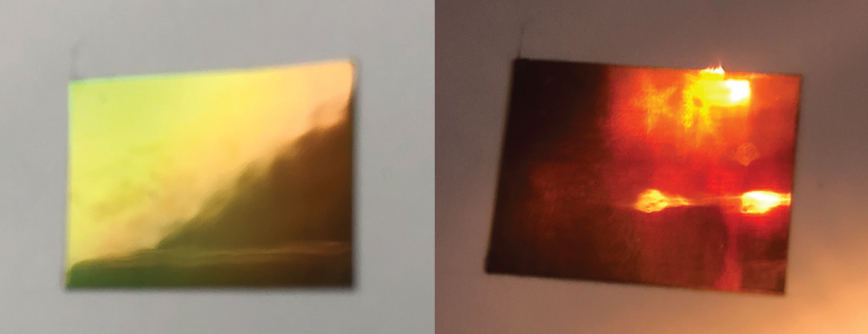Today’s blog post is sponsored by Horiba – a leading supplier of analytical and measurement systems.
We often like to employ optics and optical systems to see imperfections we normally cannot. Sometimes, these inconsistencies are of little consequence if left undetected. In other cases, such as in the detection of counterfeit money or documents, it is not. Optical systems can be used for detecting fraud and protecting against fraud. Even so, not all these systems are fool proof. These three cases of detection, protection, and failure will be explored in the following article.
Fraud Detection
There are different techniques utilizing optics that can be used to detect counterfeit currency or documents. One method for detecting counterfeit currency is to view the note under ultraviolet light. Currency is made of special paper. Often, counterfeit notes will not be made of this special paper. Ordinary paper is bleached during manufacturing and will fluoresce under ultraviolet light, whereas real currency will not. Producing and comparing the fluorescence spectrum from the notes in question to the expected spectrum can also help improve accuracy in determining if currency is real or fake.
So that covers currency, but what about documents? A method of identifying fraudulent documents being explored employs the use of Optical Coherence Tomography (OCT). OCT has been especially popular in medical applications since it can scan tissue samples layer by layer. Recently, it has been used for examining and authenticating multilayered documents. Just like OCT scans layers of tissue, it can be used to scan the layers of documents, like passports, in a nondestructive manner. This can help reveal whether the security elements appear at the same location and thickness as would be expected of an authentic document, thus revealing whether the documents are legitimate in nature. This method appears to be promising, though it would require a larger scan area to scan objects the size of passports quickly and effectively.
Fraud Prevention
Optics is not just used to detect counterfeit materials. Optical techniques are also used in preventing fraud. Look no farther than your wallet. Pull out a credit card or driver’s license—one or both are almost guaranteed to contain at least one holographic element. Research out of Harvard sought to improve these types of holograms to make them even more secure than ones currently used. The group found a way to introduce polarization sensitivity into compact holograms. The team claims that the polarization allows for a more sharply defined image while being able to store and retrieve more of them. Adding higher dimension to the hologram increases its complexity, which in turn creates another level of protection against fraud.
What is special about this holographic material is the design of its silicon nanostructure. They “build silicon nanostructured patterns on a glass substrate, which acts as superpixels”(ScienceDaily). All these superpixels respond to different polarization states of the incident light, responding to different polarization rotation directions. They use the direction of polarization to encode information or certain, specific images into the holograms. This functionality was achieved in a singular dielectric surface, unlike most polarization imaging systems that generally require many optical components to achieve a similar effect.

Above are two images of Surys Spectreod displaying the color change in different lighting. Courtesy of IHMA.
Other developments in holography to prevent fraud comes from Surys—an optical and digital security solution company based out of France. In 2018, their Spectreod was awarded the title in the Innovation in Holographic Technology category in the Excellence in Holography Awards. Their design, reminiscent of the work described out of Harvard, also manipulated the phase of the incident light to create different images. One could directly look at an ID card and view information and then illuminate the card with a smartphone flashlight and view different information that responds to the movement of the light.
Fooling Optical Systems
While optical systems are increasingly capable of preventing and detecting fraud, there are still improvements to be made. One study from researchers at Yokohama National University in Japan involving fingerprint scanners made this abundantly clear. Fingerprint scanners are used anywhere as a means of keyless access to buildings to authenticating the identity of someone completing a transaction. It does not take a stretch of the imagination to see why it could be detrimental if someone with ill-intent was able to deceive a fingerprint scanner. The experiment out of Japan investigated this problem. It involved determining the acceptance rate of different fingerprint scanning devices using an artificial finger. The artificial finger was made in a mold and created out of gelatin. They experimented with different ways of preparing the fingerprints to be used imprinted on the gummy fingers. In some instances, a live person’s finger was used to create an impression in the mold, in others, images of fingerprints were used. These images were obtained from residual fingerprints that were left on surfaces like glass.
The results showed that between the eleven devices tested, the gummy finger was able to deceive each of the scanners more than two-thirds of the time—acceptance fingerprint rates ranged from 68% to 100%, depending on the scanner. To the researchers, this indicated a revaluation of using biometric data as a method of secure access may be necessary. With those kinds of acceptance rates, it suggests that the scanners in question could not reliably differentiate between a live human’s finger or an artificial gelatin finger. Keep in mind the team was able to create artificial fingers that the systems would positively verify at a ridiculously low cost—the “fingers” themselves were created with materials totaling less than ten dollars. In an ideal world, the systems would be able to always determine whether a real finger or a copy was being used.
Conclusion
Optical systems can be of tremendous value in the prevention of theft or impersonation, as well as in the detection of fraudulent documents and counterfeit currency.
Do you know any interesting about fraud detection and prevention? Please comment below!
